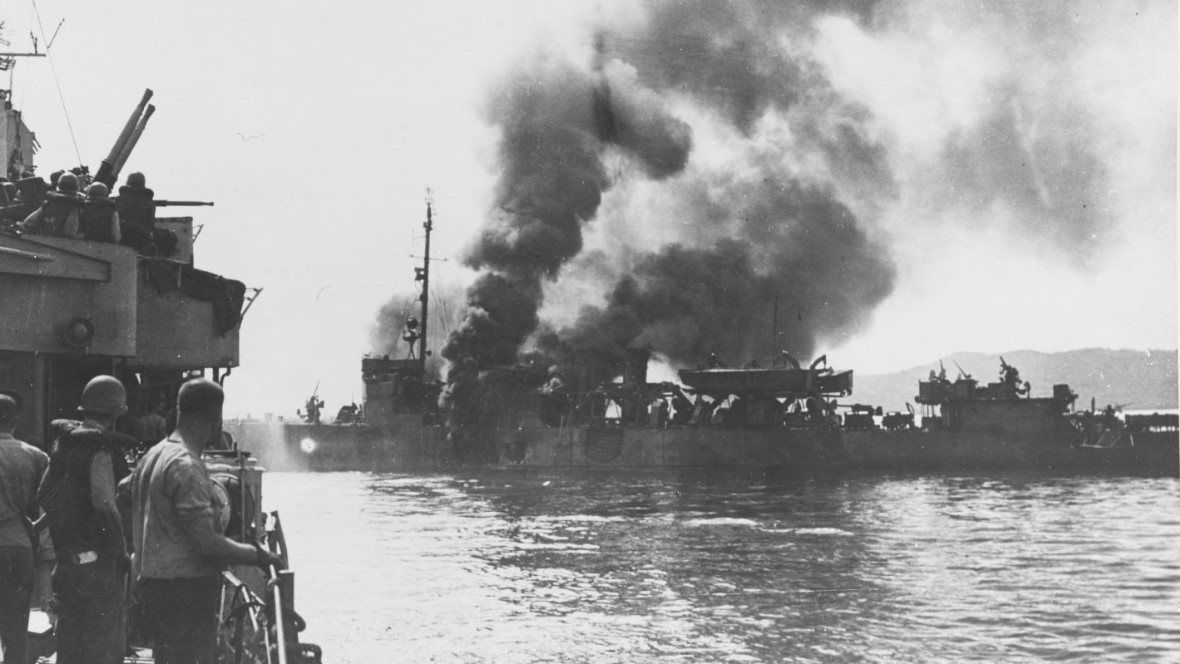Authors:
Historic Era: Era 8: The Great Depression and World War II (1929-1945)
Historic Theme:
Subject:
Summer 2021 | Volume 65, Issue 5


Authors:
Historic Era: Era 8: The Great Depression and World War II (1929-1945)
Historic Theme:
Subject:
Summer 2021 | Volume 65, Issue 5
Editor's Note: James P. Duffy, the author of over a dozen books mostly on military history, wrote “No One Returns Alive“ in our Fall 2017 issue about the critical but often-overlooked New Guinea campaign. Jim adapted the following essay from his most recent book, Return to Victory, about MacArthur’s campaign to retake the Philippines.

Throughout Japan’s history, its warriors were often eager to sacrifice their lives for their emperor. Suicide missions by Japanese aircraft pilots and officers on midget submarines were not an entirely new phenomenon by the time the Philippines became the number one target of the Allies in the fall of 1944. There were several instances of pilots attempting to crash their planes into US warships with some limited success. None of these were planned or ordered by competent commanders, but were spur-of-the-moment decisions made by the pilots themselves. Since none of them survived, we have no clear understanding of why they chose to do what they did other than to die for their emperor.
One of the earliest recorded suicide missions to attack American ships was on September 13, 1944, although there is no indication it was successful. Several Imperial Army pilots belonging to the 31st Fighter Squadron on the Philippine island of Negros decided on their own to strap 100kg bombs to two of their aircraft. Taking off just before dawn, First Lieutenant Takeshi Kosai and the second pilot vanished after takeoff. Since there were no reports of a plane crashing into American Navy warships that day, probably both fell victim to Allied patrol aircraft.
The turn to officially sanctioned suicide missions by Japanese pilots was a sure sign of desperation. Attacks on US Navy carrier task forces were proving unproductive since these valuable targets were defended by a large array of ships with antiaircraft guns as well as their own aircraft flying defensive patrols above them.
The man responsible for sending so many Imperial Navy pilots — for most suicide pilots were navy flyers — to their deaths was Vice Admiral Takijiro Onishi. In July 1944, Onishi was already advocating what he called “body-crashing” into Allied ships and B-29 bombers. He claimed that pilots who would conduct such attacks were “god-like soldiers.”
Onishi called these men “shimpu,” although they became more infamous to Westerners as “kamikaze.” Both versions originate with Japanese translations of “divine wind,” based on two incidents occurring in the 13th century. In the first, the Mongol emperor Kublai Khan, grandson of Genghis Khan, sent an invasion fleet estimated between five hundred and nine hundred ships carrying